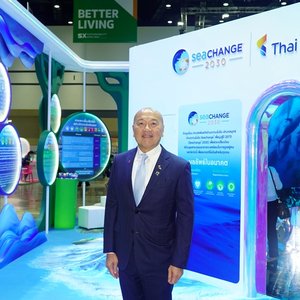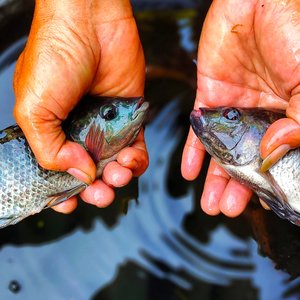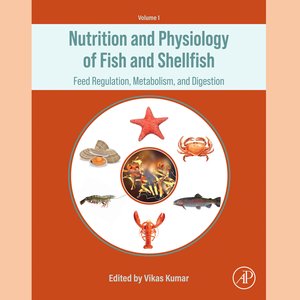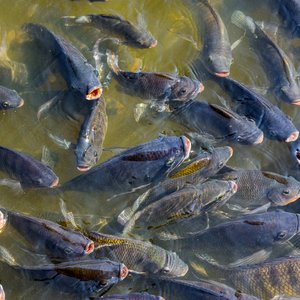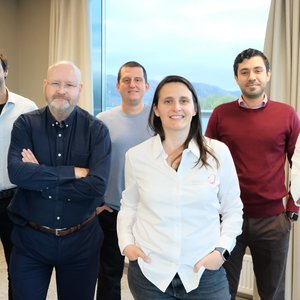Skretting released its Impact Report for 2024, showing the progress that was made across its global operations and launching a new sustainability value proposition.
Maintaining social license
In 2024, one of the aquaculture industry’s biggest challenges is maintaining its social license to operate.
“Our primary responsibility as an industry is to contribute to a more sustainable food system, every single day. That means continuously improving transparency around our environmental and social impacts,” said Bastiaan van Tilburg, CEO of Skretting, in an interview with Aquafeed.com. “Consumers and stakeholders don’t expect perfection; they expect openness. That includes being upfront about our successes and equally transparent about areas where there’s room to improve, along with the steps we’re taking to reduce risks throughout our operations and supply chains.”
“We believe that openness, transparency, and collaboration across the value chain are the keys to rebuilding public trust and solidifying aquaculture’s role as a safe, healthy, and sustainable way to feed the world’s growing population.”
Greenhouse gas emission reductions
Skretting’s 2024 Impact Report includes global greenhouse gas (GHG) emission figures along with detailed data for every business unit, and further granularity for its salmon operations in Australia, Chile, North America, and Norway.
Compared to its 2018 baseline, Skretting reported a 34.9% reduction in Scope 1 and 2 emissions, and a 10.2% reduction in Scope 3 emissions. The average carbon footprint per metric ton of feed was also reduced by 26%.
These improvements were driven by several initiatives: switching to green electricity, enhancing energy efficiency, improving raw material sourcing, engaging with suppliers, improving data quality, and optimizing feed formulations.
“Now that we've made progress in early-stage reductions, the next step is to deepen collaboration across the value chain to implement initiatives that are both cost-effective and impactful, particularly for Scope 3 emissions,” said van Tilburg.
He added, “The real challenge is balancing the trade-offs that come with replacing feed ingredients—cost, nutritional value, carbon footprint, and animal welfare. In facing those challenges, as an industry, we need to keep embracing the life-cycle mindset and understand that our environmental impact comes from an interconnected value chain, from the raw materials to plates across the globe. For example, in some cases, a feed with a higher footprint compared to an alternative can help improve fish or shrimp health and welfare, improving FCR, reducing mortalities and ultimately a lower footprint for the final product. That’s why we’re investing in research, including our new feed formulation concept, AmiNova, which optimizes nutrition and reduces nitrogen discharge,” van Tilburg explained.
To guide these decisions, Life Cycle Assessment (LCA) data is essential. “We expect our suppliers to provide high-quality, primary LCA data. We’re prioritizing suppliers with lower environmental footprints—not just between different ingredient types, but also between suppliers of the same ingredient. This allows us to make more informed decisions about sourcing and formulation,” van Tilburg said.
Reducing antibiotics use
Skretting is also transparent about its antibiotic use—reporting how much is used, where, and why. Since 2021, there has been a 5% decrease in the use of critically important antimicrobials (CIAs) for human medicine and a 53% decrease in non-CIA use. In 2024, only 1.4% of all feed contained antibiotics, down from 1.6% in 2023.
“Most farmers have reduced antibiotic use, but the unusually hot summer in 2024, especially in Southern Europe, led to new bacterial issues and a spike in antibiotic use in some areas. In response, the industry collaborated to produce a handbook for managing these challenges,” van Tilburg said.
In Chile, the industry continues to rely on antibiotics to treat Salmonid Rickettsial Septicemia (SRS). “While we’re always looking for alternatives, we provide medicated feed based on veterinary prescriptions and in line with the Animal Welfare Act, which mandates that animals have the right to treatment. The main antibiotic used in Chile, Florfenicol, is approved for aquaculture and does not compete with human medicine,” he added.
Despite isolated cases, overall antibiotic use is decreasing, thanks in part to health and functional diets. “In 2025, we’ll launch new feed solutions developed in collaboration with Nutreco Exploration, using PhytoComplexes – proprietary plant-based ingredients never before used in animal feed. These deliver unique, health-boosting benefits,” van Tilburg announced.
“A complex world requires complex solutions, which is why Skretting has a holistic approach involving several key factors, such as effective vaccines, selective breeding, improved biosecurity, optimal water quality, feeding regimes, and health monitoring, education and training on antibiotic use, and strong regulatory frameworks,” he said.
Balancing cost efficiency and sustainability
“At Skretting, performance and sustainability must go hand in hand. Our approach starts with customer needs and focuses on helping them meet their sustainability goals while improving performance,” said van Tilburg.
“Our priority is to enhance sustainability while keeping feed costs low. At the same time, we’re investing in innovation that adds customer value and reduces carbon footprints. We take a long-term view to ensure that together with our customers, we make decisions aligned with future market realities.”
One example is addressing the limited availability of EPA and DHA. “We know events like El Niño in Peru can spike fish oil prices. That’s why we’re making maximum efforts to scale up alternative sources today, ensuring stable and affordable pricing in the future,” he explained.
A milestone year for sustainability
In 2024, certified marine ingredient use rose from 77% to 85%. Skretting also prioritized Diversity & Inclusion (D&I): 27% of senior leadership roles are now held by women. A dedicated D&I Council promoted feedback culture and worked to ensure equity, especially for more vulnerable employees.
Skretting’s parent company, Nutreco, also inaugurated the Garden of the Future in Thurgau, Switzerland, a facility where PhytoComplexes are developed for inclusion in Skretting feeds, tackling key fish and shrimp health issues.
Skretting introduced the Novel Ingredient Matrix, an evaluation tool that assesses suppliers based on sustainability, ingredient performance, and supplier capabilities, with a special focus on alternative EPA and DHA sources.
In line with its commitment to responsible sourcing, seven Skretting facilities have achieved ASC Feed Certification, leading the way in the salmon industry as well as in the EU, Ecuador, and Japan. This standard sets high requirements for traceability, environmental sustainability, and social responsibility.
Introducing ACT: A new sustainability value proposition
Alongside its Impact Report, Skretting launched ACT, its new sustainability value proposition. ACT stands for Action (doing what matters most and with impact), Connection (involving the right stakeholders to accelerate change), and Transparency (being a trusted advisor and providing the right information). It was designed with Skretting customers in mind to help them achieve their desired sustainability ambitions in the markets where they operate.
“Although we're working on global targets in the three pillars of our RoadMap (Health & welfare, Climate & circularity and Good citizenship), ACT is a recognition that one size doesn’t fit all and that we need to work together with farmers to find solutions that address their specific realities, whether they operate in Norway, Ecuador, India or Nigeria, to name some, and taking the actions that matter the most to them. It also deepens our collaboration with suppliers and other partners to improve traceability and transparency in sourcing,” van Tilburg explained.
Looking ahead
“Sustainability is core to our business and one of our greatest strengths. We aim to be the leading provider of nutritional solutions in aquaculture,” van Tilburg said.
“We’ll continue working to reduce our Scope 3 emissions, increase the share of certified marine ingredients, and improve due diligence through the ASC Feed Standard to identify environmental, social, and legal risks across our global sourcing.”
“Through ACT, we’re linking sustainability directly to customer performance—creating added value through efficiency, health, and precision farming. This will be powered by greater investments in innovation and the expansion of digital technologies,” van Tilburg concluded.
Read the report here.




